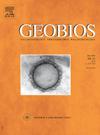High-accuracy in the classification of butchery cut marks and crocodile tooth marks using machine learning methods and computer vision algorithms
Abstract
Some researchers using traditional taphonomic criteria (groove shape and presence/absence of microstriations) have cast some doubts about the potential equifinality presented by crocodile tooth marks and stone tool butchery cut marks. Other researchers have argued that multivariate methods can efficiently separate both types of marks. Differentiating both taphonomic agents is crucial for determining the earliest evidence of carcass processing by hominins. Here, we use an updated machine learning approach (discarding artificially bootstrapping the original imbalanced samples) to show that microscopic features shaped as categorical variables, corresponding to intrinsic properties of mark structure, can accurately discriminate both types of bone modifications. We also implement new deep-learning methods that objectively achieve the highest accuracy in differentiating cut marks from crocodile tooth scores (99% of testing sets). The present study shows that there are precise ways of differentiating both taphonomic agents, and this invites taphonomists to apply them to controversial paleontological and archaeological specimens.

 求助内容:
求助内容: 应助结果提醒方式:
应助结果提醒方式:


